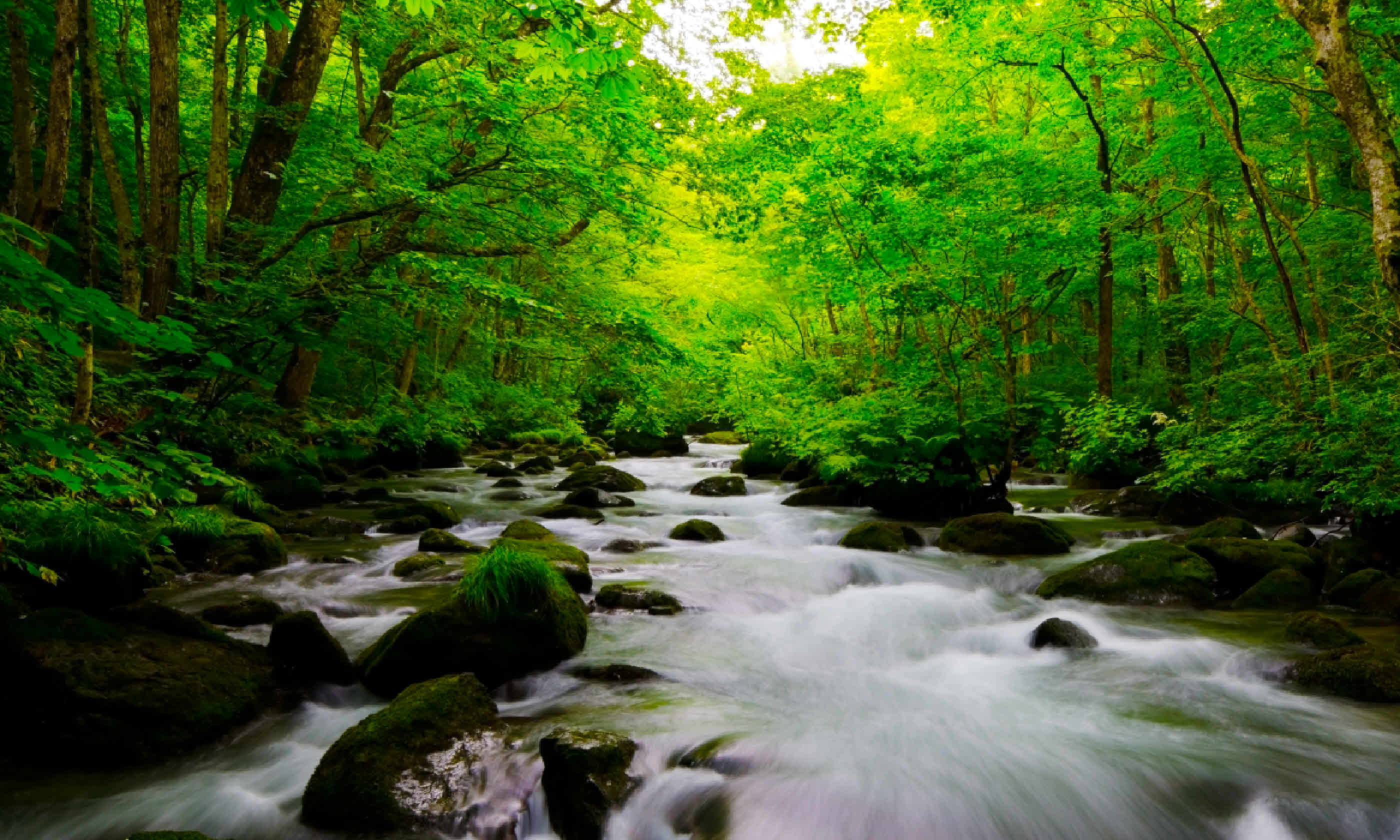
Trekking through bamboo forests, around glorious lakes – accompanied by tinkling 'bear bells' – Japan is one of our favourite walking spots. Here's how to do it like the locals
Halfway to northern Honshu, a hiker stepped onto the bullet train with a tinkle. We looked up from our bento boxes (sashimi heaped high with shavings of fresh ginger and peppery green wasabi) and watched him with interest: this was our first Japanese hiker, equipped – we’d heard about this – with a little bell on his pack for scaring bears.
Looking out of the windows, it didn’t look like bear country. The landscape sliding past us at 300km/h was heavily cultivated; rice harvesters beetled around the paddy fields like oversized purple toasters, spewing out showers of grey-gold stalks; conical rice sheaves hung on poles to dry; and the farmhouses and barns looked, well, suburban. And anyway, Japanese bears are rarely found outside of the northernmost island of Hokkaido – we were on our way to the beech woods and volcanoes about three hours north of Tokyo.
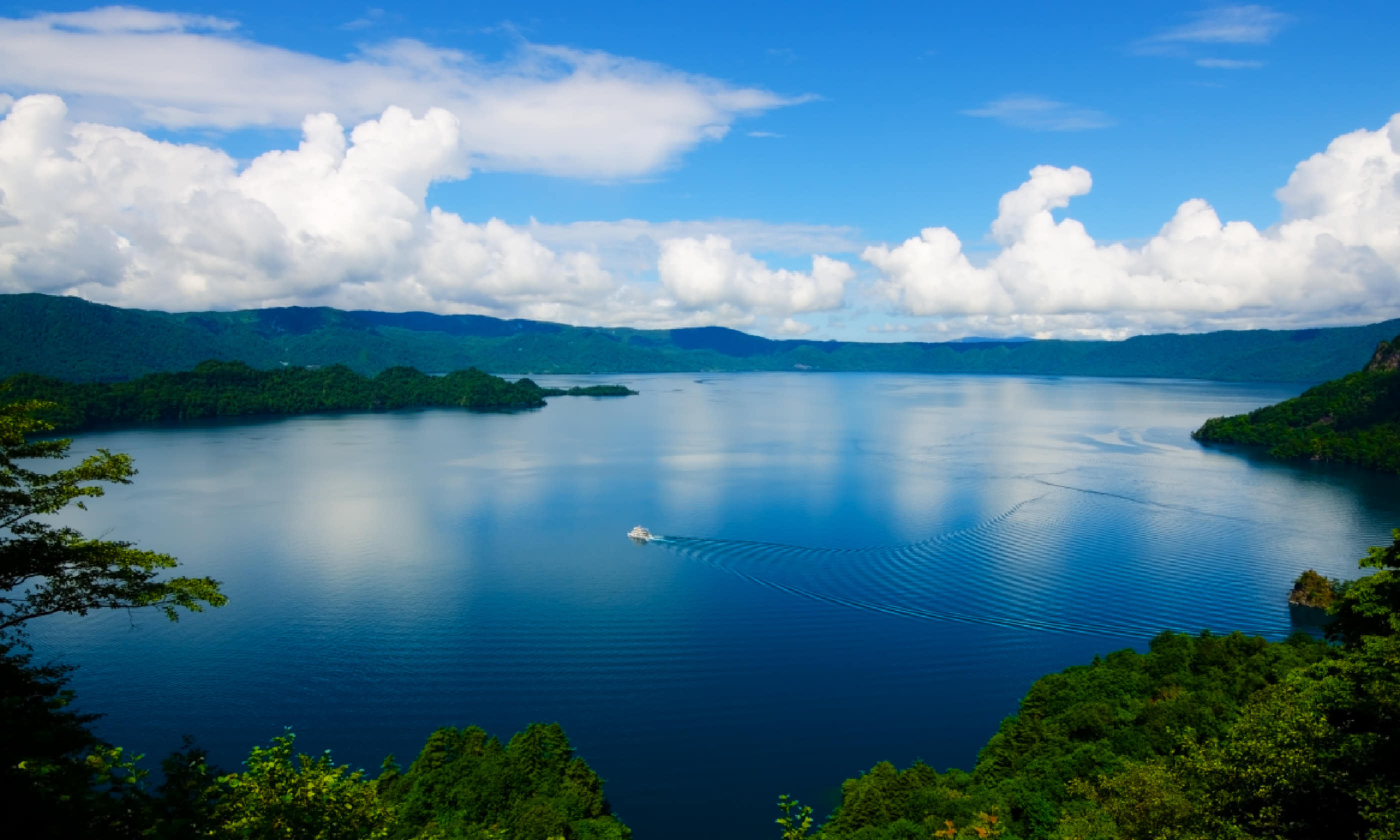
Lake Towada
The hiker on the train was wearing the bell just in case. We later found that everybody was wearing everything ‘just in case’: GoreTex jackets and trousers, polar fleeces, the sort of boots you climb Everest in – all for a stroll along a river or to see a charming waterfall. This (very Japanese) longing for control over the unpredictable means that not only are casual hikers startlingly over-equipped, but rivers are sluiced or dammed, waterfalls are buttressed (for a perfectly centred torrent) and walking paths are cemented or cindered.
But you know what? There are still areas of such exquisite natural and man-made beauty that you never forget them. We were heading for one: Towada-Hachimantai, one of the oldest national parks in Japan, which has two separate sections – 100km apart – each with a volcanic lake ringed by mountains, forests and steaming springs.
It was late in the year – great for leaves but lousy for reliable information on mountain huts or for turning up at onsen (hot springs) unannounced – so we decided to do day hikes rather than camp, and hire a car rather than risk the out-of-season bus services.
Which is how we found ourselves rustling through bamboo on the flanks of Akita Komaga-take, a range of mountains high on the Hachimantai plateau (in the southern section of the park), with waves of silver birch and blazing autumnal beech below us. In another couple of months, this would be a piste in Tazawa-ko Ski Park (named after the lake below), which must have some of the finest skiing views on earth.
The sulphur smell started barely beyond the last picnic table. We walked into a dead, grey- and yellow-streaked rockscape, eerily threaded with steam: a reminder of the free volcanic plumbing nature has provided for the dozens of hot spring hotels nearby.
We were aiming for the summit of Yoko-dake (1,583m). It took an hour to walk up to a lovely tarn, ringed by cedar plank walkways, with a mountain hut (closed), toilets (closed) and a few hikers peacefully tucking into packed lunches and flasks of green tea. All around was the tinkle of hiking bells, like a flock of tiny, invisible goats, while Tazawa-ko Lake itself glimmered, round and blue and beautiful. My companion, Charlie, clambered onto a ridge for a picture – behind him, rings of mountains receded into the blueness like ripples in a pond.
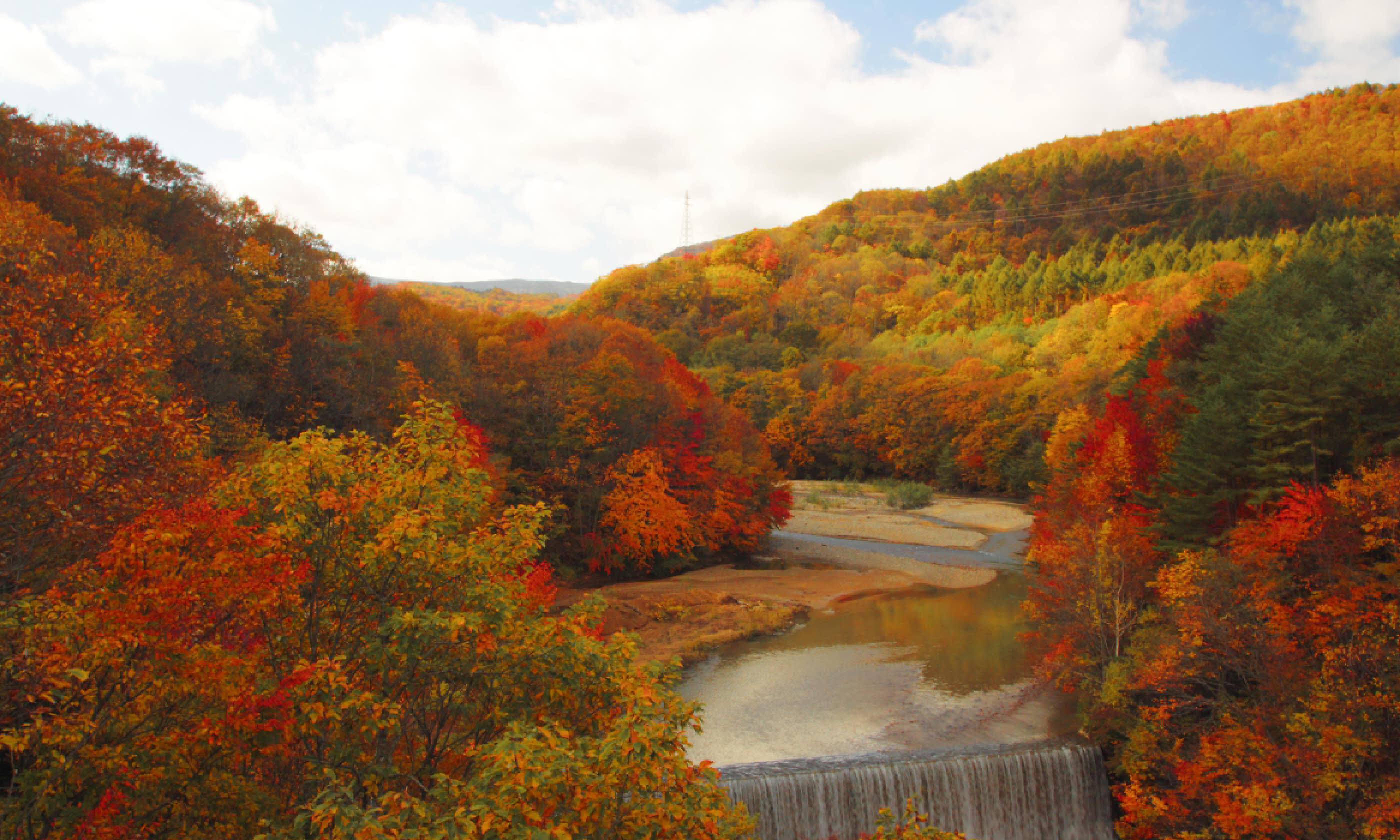
Gully Matsukawa, Hachimantai (Shutterstock)
The edges of the caldera loomed above us as we walked, the bowl of the plain spread out below. We tramped through shaving-brush pine, dry blonde grass, pumice, lava and dark earth; we crunched across scree as if it was barbecued charcoal. We were questioned merrily by almost everyone we passed, our useless Japanese running out after ‘good day’, ‘beautiful’ and ‘England’.
We made a quick side-trip to 1,623m O-dake, above the tarn. At the summit a shinto shrine was piled with rocks and poignant offerings, marked by a battered metal torii (gate), burnt candles, stone tabernacles and funeral markers carried up by loyal relatives.
On top, the first feeling was elation, the second frustration. We could actually see the path of the three-day hike curving wide of the lake and shimmying north through the blue hills, to end out of sight at Nyuto Onsen – but we had to turn back and head there by car.
So, Nyuto – a fulminating area of springs and traditional, rambling wooden inns with outdoor hot pools – was where we started our next day’s walk. I don’t think I’ve ever seen woods more beautiful than the ones that nearly caused me lung failure on the way out of the valley. We staggered up the steep, earth path, under maples whose leaves covered the sky like sheets of stars, then beeches the colour of sunsets and embers.
At the next plateau – that is, before two more hours of vertical plodding, helped and hindered by giant cedar planks suspended on chains along the gullies – we found an open mountain hut. It smelled (and remember, this was low season) of old blankets and long-drop loos so putrid that they brought back all my worst memories of China.
We sat in the sun and listened to a lone bee, the rustle of bamboo and dwarf pines, and the pepper-grinder exclamations of the ubiquitous Japanese crows. A couple and a lone hiker arrived separately, laden with fabulously OTT equipment. We all nodded at the sun and smiled.
At the top, there was another shrine, made doubly impressive by the red haze and frenzied pulsing in my ears. To one side, something gleamed dully. It was a bell – which, up close, looked like the sort you put on a pedigree cat – obviously dropped by a careless hiker. I put it on my pack and suddenly understood: it was simply to announce a human presence… to the landscape, to the kami (spirits) and to the bears.
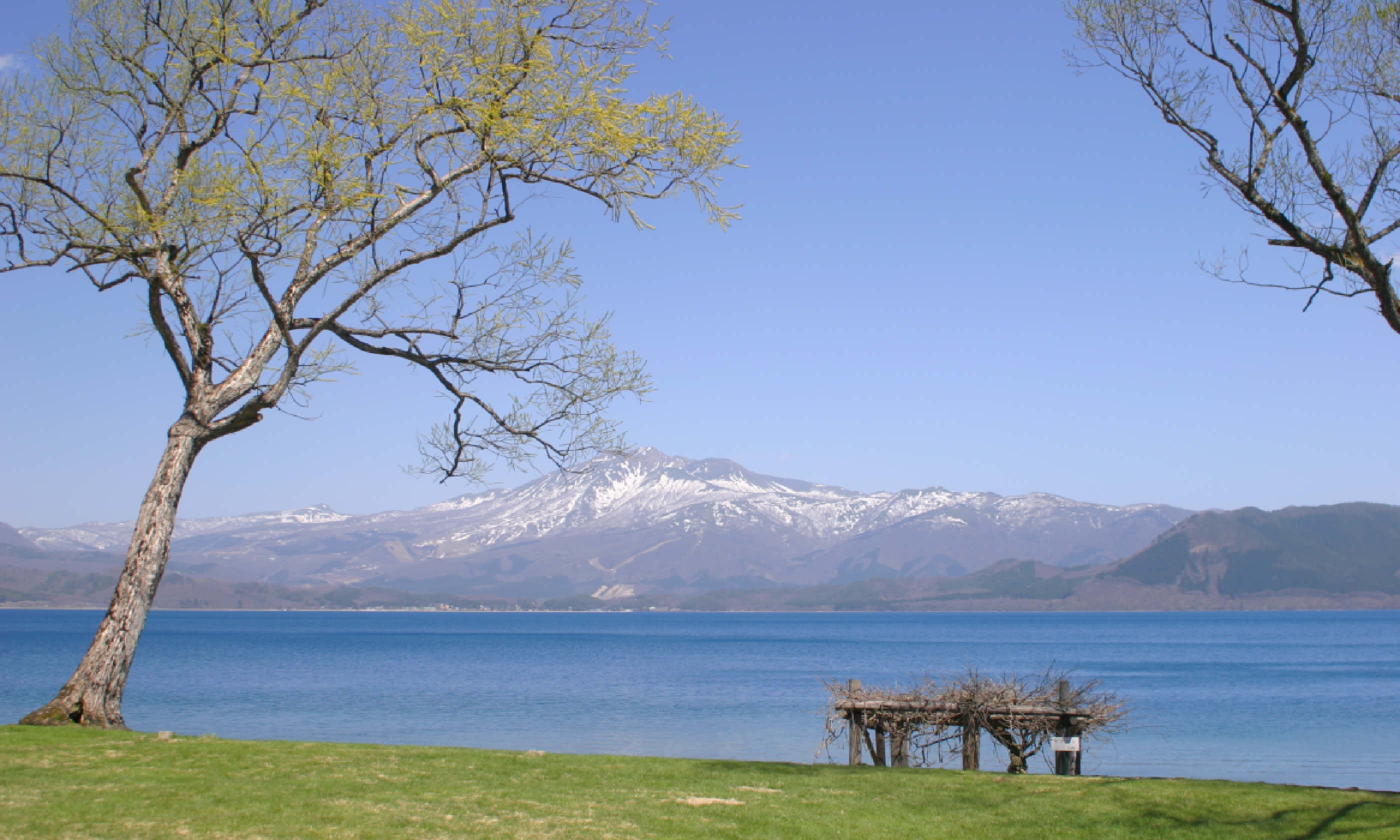
Mt. Komagatake from the shore of Tazawa lake
“Oh God,” said Charlie, “are we going to have that noise all the way around Honshu?” Too right. I tinkled my way back down the mountain to spend the night at Magoroku Onsen, where we wore yukata (light cotton kimonos), ate outlandish fishy creations on lacquered trays and lolled around in the racily mixed hot baths.
I tinkled around the gorgeous Lake Towada, 100km north, where, if you only looked up, you could ignore the inexplicable lumps of concrete reinforcing the lake edge and instead admire the cauldron of fiery beech leaves above.
I tinkled less successfully along the Oirase Gorge, famed for its gorgeous leaves, and therefore humming with cars, minibuses and luxury coaches (sadly, the path follows the road), making a mental note to avoid anything famed for anything in the future.
Once we got back to Tokyo, however, it seemed a bit doo-hickey having a bell tied onto my backpack, so I took it off. It now sits in my desk drawer as a reminder that a return to Japan for a proper walking trip is required as soon as possible.
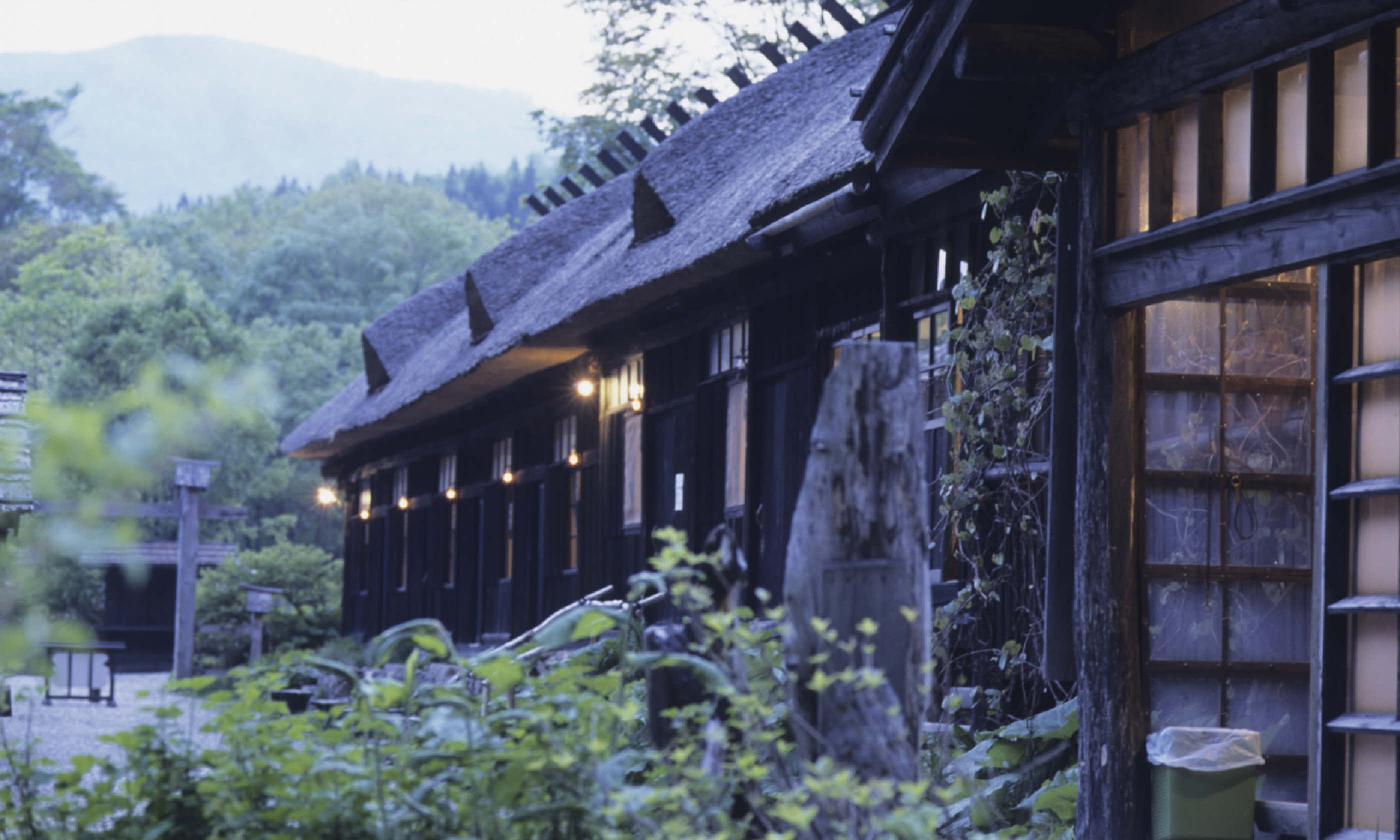
Hot Springs accommodation (Shutterstock)